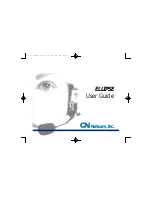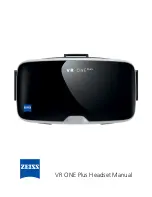
3
• For non-intrinsically safe models:
Operating temperature range: –20 °C (–4 °F) to 55 °C
(131 °F)
Storage temperature range: –20 °C (–4 °F) to 55 °C (131 °F)
• For intrinsically safe models:
Operating temperature range: –20 °C (–4 °F) to 50 °C
(122 °F)
Storage temperature range: –20 °C (–4 °F) to 50 °C (122 °F)
When selecting accessories to respiratory personal
protective equipment, such as hard hat mounted hearing
protection, please consult the NIOSH approval label or
consult 3M Technical Service for approved configurations.
This product contains electrical and electronic
components and must not be disposed of using standard
refuse collection. Please consult local directives for disposal of
electrical and electronic equipment.
APPROVALS
Hereby, 3M Svenska AB declares that the Bluetooth
®
and radio
communication is in compliance with Directive 2014/53/EU and
other appropriate directives to fulfill the requirements for the
CE marking. 3M Svenska AB also declares that the PPE type
headset is in compliance with Regulation (EU) 2016/425 or
Community Directive 89/686/EEC.
The applicable legislation can be determined by reviewing the
Declaration of Conformity (DoC) at www.3M.com/peltor/doc.
The DoC will also show if some other type-approvals are also
applicable. When retrieving your DoC, please locate your part
number. The part number of your earmuffs can be found at
the bottom of one of the cups. An example can be seen in the
picture below.
The PPE is audited annually (if Category III products) and
type approved by the Finnish Institute of Occupational Health,
Notified Body No. 0403, Topeliuksenkatu 41 b, FI-00250
Helsinki, Finland. The product has been tested and approved
in accordance with EN 352-1:2002/EN 352-3:2002, EN 352-
4:2001/A1:2005, EN 352-6:2002, EN 352-8:2008.
A copy of the DoC and additional information required in
the Directives can also be obtained by contacting 3M in the
country of purchase. For contact information, see the last
pages of this user instruction.
LABORATORY ATTENUATION
The attenuation rating (SNR/NRR) was obtained with the
device powered off. Explanation of attenuation tables:
A. European Standard EN 352
Research suggests that users may receive less noise reduction
than indicated by the attenuation value(s) on the packaging, due
to variation in fit, fitting skill, and motivation of the user. Refer
to your applicable regulations for guidance on how to adjust
label values and estimate attenuation. In addition, 3M strongly
recommends fit testing of hearing protectors.
A:1 Frequency (Hz)
A:2 Mean attenuation (dB)
A:3 Standard deviation (dB)
A:4 Assumed protection value, APV (dB)
A:5
H = Hearing protection estimation for high-frequency sounds
(ƒ ≥ 2000 Hz).
M = Hearing protection estimation for medium-frequency
sounds (500 Hz < ƒ < 2000 Hz).
L = Hearing protection estimation for low-frequency sounds (ƒ
≤ 500 Hz).
A:6 Criterion Level
H = Criterion level for high-frequency noise
M = Criterion level for medium-frequency noise
L = Criterion level for low-frequency noise
Criterion Levels chart is for level-dependent headsets, EN
352-4:2001/A1:2005
B. USA Standard ANSI S3.19-1974
3M strongly recommends individual fit testing of hearing
protectors. If the NRR is used to estimate typical workplace
protection, 3M recommends that the noise reduction value be
reduced by 50% or in accordance with applicable regulations.
B:1 Frequency (Hz)
B:2 Mean attenuation (dB)
B:3 Standard deviation (dB)
B:4 Tested with 3M™ PELTOR™ Hard Hat Model H-700
The level of noise entering a person’s ear, when hearing
protector is worn as directed, is closely approximated by the
difference between the A-weighted environmental noise level
and the NRR.
Example
1. The environmental noise level as measured at the ear is 92 dBA.
2. The NRR is 25 decibels (dB).
3. The level of noise entering the ear is approximately equal to
67 dB(A).
CAUTION: For noise environments dominated by frequencies
below 500 Hz the C-weighted environmental noise level should
be used.
C. Compatible Industrial Safety Hard Hats
These earmuffs should be fitted to, and used only with, the
industrial safety hard hats listed in Table D. These earmuffs
were tested in combination with the following industrial safety
hard hats, and may give different levels of protection if fitted to
different hard hats.
Explanation of the industrial safety hard hat attachment table:
C:1 Hard hat manufacturer
C:2 Hard hat model
C:3 Hard hat attachment
C:4 Head size: S = small, M = medium, L = large
EN












































